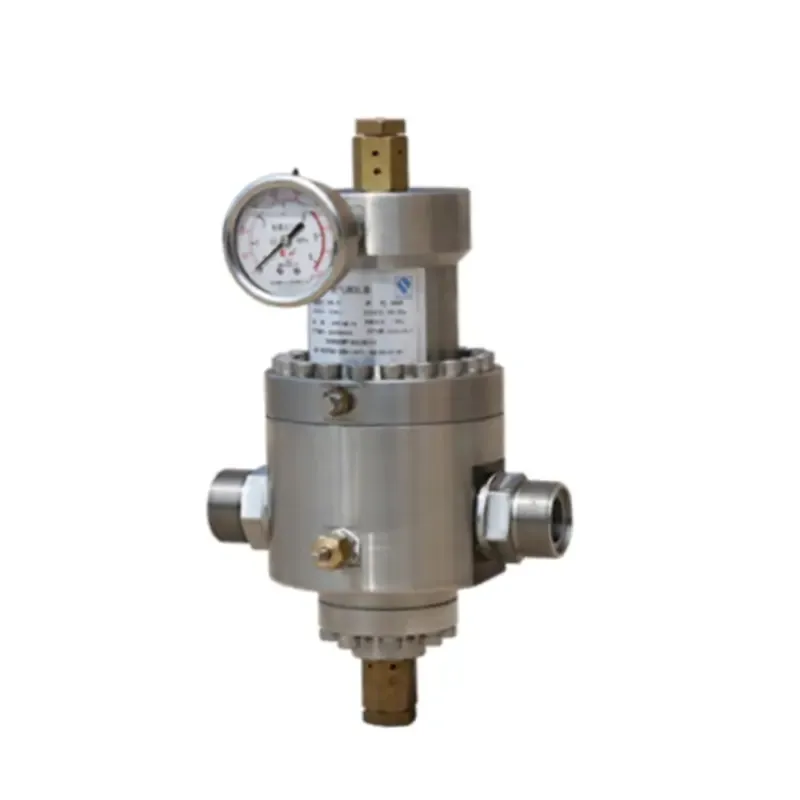
Dec . 04, 2024 16:21
Back to list
Pressure Vessel Design and Applications in Engineering Fields
Understanding Pressure Vessels An Essential Component in Engineering
Pressure vessels are integral structures used in various industries, ranging from oil and gas to chemical production and power generation. These containers are designed to hold gases or liquids at a pressure substantially different from the ambient pressure, making them a critical component in numerous applications. Understanding their design, functionality, and safety features is essential for anyone involved in engineering or manufacturing processes.
A pressure vessel must be designed to withstand the stresses that result from high pressure and temperature. The materials chosen for constructing these vessels are crucial; they must possess strength, durability, and resistance to corrosion. Common materials include carbon steel, stainless steel, and, for extreme conditions, specialized alloys. The design process also involves thorough calculations to determine wall thickness and shapes to minimize stress concentrations.
.
Regular maintenance and inspection of pressure vessels are essential to ensure their integrity and safety. Non-destructive testing methods, such as ultrasonic testing, radiographic testing, and magnetic particle inspection, are commonly used to detect any weaknesses or defects in the vessel material that could lead to a failure. These inspections are critical because they allow for the early identification of potential issues, which can be addressed before they lead to serious accidents.
وعاء الضغط

In addition to regular inspections, pressure vessels must also be equipped with various safety features. Relief valves are one such feature, designed to release excess pressure to prevent potential explosions. Safety interlocks and automated shut-off systems can also be implemented to further enhance safety during operation.
The application of pressure vessels is diverse. In the chemical industry, they are used in reactors, distillation columns, and storage tanks. In the oil and gas sector, pressure vessels are employed for storing gases, refining products, and transporting materials. Power plants utilize them for boiler systems and various processes that involve high-pressure steam.
Moreover, with the advances in technology, newer designs are emerging that focus on energy efficiency and sustainability. Pressure vessels can now be designed with better insulation materials to minimize energy loss, contributing to more sustainable industrial practices. Innovations in materials science are also leading to lighter yet stronger vessel designs, improving overall efficiency in transport and installation.
In conclusion, pressure vessels are vital components in modern engineering, serving essential functions in various industries. Understanding their design, functionality, and safety measures is critical for ensuring safe and efficient operations. As industries continue to evolve and innovate, the importance of pressure vessels and their adherence to safety standards will only grow, highlighting the need for continued research and development in this field. By prioritizing safety and efficiency, the engineering community can enhance the reliability of pressure vessels, ultimately contributing to safer industrial practices across the globe.
Latest news
-
Safety Valve Spring-Loaded Design Overpressure ProtectionNewsJul.25,2025
-
Precision Voltage Regulator AC5 Accuracy Grade PerformanceNewsJul.25,2025
-
Natural Gas Pressure Regulating Skid Industrial Pipeline ApplicationsNewsJul.25,2025
-
Natural Gas Filter Stainless Steel Mesh Element DesignNewsJul.25,2025
-
Gas Pressure Regulator Valve Direct-Acting Spring-Loaded DesignNewsJul.25,2025
-
Decompression Equipment Multi-Stage Heat Exchange System DesignNewsJul.25,2025

